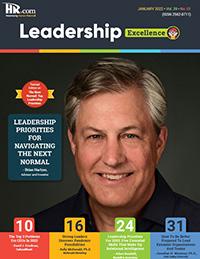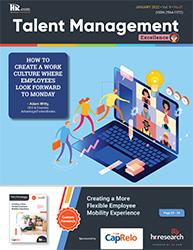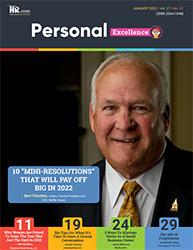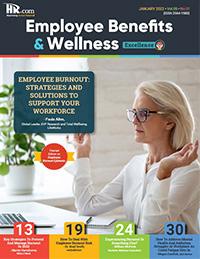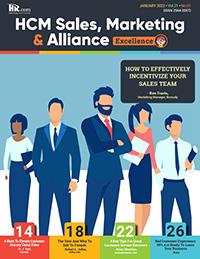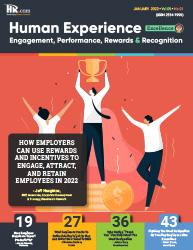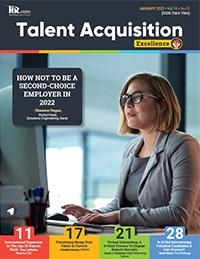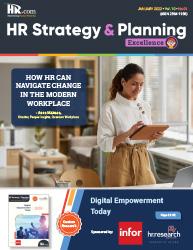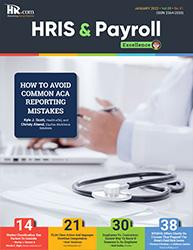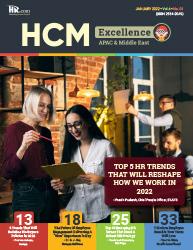

HR Trends 2023: It’s Time For HR To Break Boundaries



Five Lessons For HR Practitioners In 2023

Taking cues from the manufacturing floor - Lisa Dulski, CHRO, Novolex Technology,



HR Trends 2023: It’s Time For HR To Break Boundaries



Five Lessons For HR Practitioners In 2023

Taking cues from the manufacturing floor - Lisa Dulski, CHRO, Novolex Technology,
9 HR trends for the new year - Natal Dank, Co-Founder, PXO Culture and Chief HR Trendwatcher, HR Trend Institute Why HR Is The Key
4 trends to watch out for - Eric Sydell, EVP of Innovation, Modern Hire
Crytpo fallout and industry collapse signal weak links in company structures - Jason Walker and Rey Ramirez, Co-founders, Thrive HR Consulting

This monthly interactive learning experience captures key metrics and actionable items and keeps you focused on your HR strategy and planning goals and solutions.
HR.com webcasts deliver the latest HR Strategy and Planning industry news, research trends, best practices and case studies directly to your desktop. Webcasts are available live online with a downloadable podcast and a copy of the slides (PDF) available before and after each

In HR Strategy and Planning events, discover the business process for ensuring that an organization has suitable access to talent to ensure future business success, trends in strategic planning and analytics, resource requests, analyzing resource utilization, forecasting capacity, and managing human resources. The learning experience offered teaches how to capture key metrics and actionable items and keep you focused on your HR strategy and planning goals and solutions and make them impactful. Each Vir tual Event consists of up to 10 credit webcasts.
HR.com’s one-hour webcasts, in every HR specialty including HRIS and Payroll, are pre-approved for HRCI and SHRM credit (excluding Demo webcasts).
Join almost 70,000 HR.com members with a similar interest and focus on workforce planning and analytics. Share content and download reserach repor ts, blogs, and ar ticles, network, and “follow” peers and have them “follow” you in a social network platform to communicate regularly and stay on top of the latest updates. This well established Workforce Planning and Analytics Community is an invaluable resource for any HR professional or manager
Arun Kumar R Design and Layout (Digital Magazine) Chandra Shekar A K Magazine (Online Version)
Please send any correspondence, articles, letters to the editor, and requests to reprint, republish, or excerpt articles to ePubEditors@hr.com For customer service, or information on products and services, call 1-877-472-6648
is published monthly by HR.com Limited, 56 Malone Road, Jacksons Point, Ontario L0E 1L0 Internet Address: www.hr.com
Debbie Mcgrath Publisher, HR.comIn the past couple of years, work, workplace, and workforce have undergone drastic changes. Of all the changes to businesses brought about by the disruptions, the impact on human resources has been significant.
Workplace transitions, record levels of resignations, quiet quitting, economic upheaval, changing employee expectations, and addressing employee mental health challenges are some of the most pressing HR challenges of today and that organizations must now look out for in 2023.
What stands in the way of development and what are the trends that are expected to shape the future workplace?
The December edition of HR Strategy & Planning Excellence includes informative articles that focus on the challenges HR professionals should deal with, strategies to navigate the crisis, and trends to watch out for in the year ahead.
Ajai Mehrotra's (Sr. VP of Human Resources, Infopro Learning) article, Gain The Upper Hand With These 5 HR Trends In 2023, lists down the top five HR priorities for 2023. According to Ajai, new employee expectations impact employee attraction and retention, but HR leaders also need to oversee investments in technology, and people, promote a positive workplace environment, and reshape HR to be more digital and automated.
The pandemic has blurred the traditional boundaries separating our working lives from our personal, home, and social lives. We’re seeing a renegotiation of the employeeemployer relationship. A more holistic approach to the employee experience is the
Babitha Balakrishnan Editor, HR Strategy & Planning Excellence
need of the hour. HR Trend Institute's Natal Dank shares 9 HR trends for the new year, in her article, HR Trends 2023: It’s Time For HR To Break Boundaries.
To prepare workforces and companies, Lisa Dulski (CHRO, Novolex) shares cues from frontline manufacturing workers and the five key lessons they offer on best engaging employees and new talent in 2023. Read her article, Five Lessons For HR Practitioners In 2023 for valuable insights.

In 2023, the HR industry will be laser-focused on new and better technologies and even more focused on employee engagement and the employee experience, according to Modern Hire's Eric Sydell. In his article, Technology, Employee Engagement And Ethical AI Will Shape The HR Industry In 2023, Eric predicts 4 trends that will shape the HR industry in the new year.
In brief, creating a highly engaged workforce and a thriving workplace continue to be a major focus for all HR managers. Whether it is about handling remote/hybrid employees, focusing on people analytics to navigate the work landscape, anticipating future employee and work needs, HR has to step up to the plate, sieze the opportunities that 2023 brings, and firmly take a seat at the core of organizations’ key decision-making processes going forward.
We hope you enjoy reading all the articles in this edition of the magazine and get back to us with your valuable comments/suggestions.
Happy Reading!
Write to the Editor at ePubEditors@hr.com
Disclaimer: The views, information, or opinions expressed in the Excellence ePublications are solely those of the authors and do not necessarily represent those of HR.com and its employees. Under no circumstances shall HR.com or its partners or affiliates be responsible or liable for any indirect or incidental damages arising out of these opinions and content.
In a world of unparalleled challenges (global pandemic, racial injustice, political rivalry, digital 4.0, emotional malaise), uncertainty reigns. Finding opportunity in this context requires harnessing uncertainty and harnessing starts with reliable, valid, timely, and useful information. The Excellence publications are a superb source of such information. The authors provide insights with impact that will guide thought and action.
Rensis Likert Professor, Ross School of Business, University of Michigan Partner, The RBL Group

Excellence publications are my ‘go-to’ resource for contemporary and actionable information to improve leadership, engagement, results, and retention. Each edition offers rich and diverse perspectives for improving the employee experience and the workplace in general.

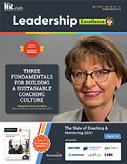
Author, Virtual /Live Keynote Presenter, Inc.’s Top 100 Leadership Speakers
I regularly read and contribute to Leadership Excellence and Talent Management Excellence. I use many of the articles I read to augment my own presentations and I often share the articles with my clients. They are always quick, right on target for the latest issues in my field, and appreciated by my clients.

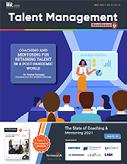
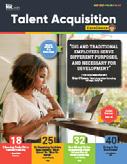
If you want to stay up to date on the latest HR trends, choose a few of the different issues from the Excellence series of publications.
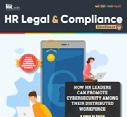
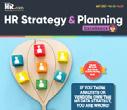
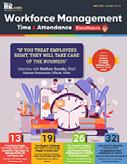

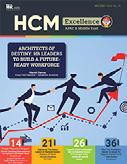

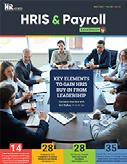
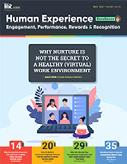 Dr. Beverly Kaye CEO,
Dr. Beverly Kaye CEO,

BevKaye&Co.

HR leaders have been put to the test more than ever in the last few years. They faced challenges on all fronts due to the abrupt transition to remote/ hybrid work, mass resignations, economic turbulence, and geopolitical turmoil.
Employee well-being, flexible work schedules, and DEI have been businesses’ top HR priorities as they have struggled to adapt to tremendous disruption and change. As we approach the new year, we’ll see many of these trends continue and develop as businesses focus on relationship-building, skill development, and communication.
New employee expectations impact employee attraction and retention, but HR leaders also need to oversee investments in technology, and people, promote a positive workplace environment and reshape HR to be more digital and automated.
Here are the top five HR priorities for 2023:
According to a report by Gartner, 60% of HR leaders prioritize leader and manager effectiveness, and 24% claim that their approach to leadership development does not adequately equip leaders for the workplace of the future.
The expectations placed on leaders change along with organizations and society, which makes their jobs more difficult. Today’s workplace demands that leaders be more sincere, sympathetic, and adaptable. These three demands signify a new leadership style, “human” leadership.

Human leaders are still hard to come by, despite HR leaders’ best efforts to instill in them the commitment, courage, and confidence they need to answer the call. To be competent human leaders, leaders need dedication, courage, and confidence; however, HR’s common approaches do not confront the obstacles preventing leaders from realizing their full potential. These challenges include their personal feelings of uncertainty, anxiety, and doubt. Recognize their humanity and deal with these emotional barriers head-on to help leaders fulfill the desire for human leadership and train them for the future of work.
An article published on HRD states that organizational design and change management are top priorities for 53% of HR leaders. Political tensions, economic unpredictability, and digital transformations have contributed to significant disruption and change. CHROs are focused primarily on change management and organizational design since organizations are experiencing extreme change and uncertainty.

According to a recent Gartner survey, 74% of employees were willing to support organizational
change in 2016; today, only 38% say the same. This correlates with a lower intent to stay with the organization: Only 43% of employees who experience above-average change fatigue intend to stay with their organization, compared with 74% of employees with low fatigue levels.
The effects of change fatigue are obvious. HR managers must assist staff members in navigating change and minimizing its negative effects on their productivity and, more crucially, their well-being.
85% of respondents to an IDC survey on employee experience agreed that better customer experiences and higher customer satisfaction correlate with improved employee experiences and higher employee engagement. Many HR leaders need help pinpointing the intrinsic moves employees need to make to advance their careers. Only one out of every four workers in a recent Gartner survey on employee career preferences expressed confidence in their career at their company, and three out of every four people looking for a new role are interested in positions outside of their company.
That route is less obvious now that professional experience is evolving. With less time spent in offices, career options are less obvious; employees need to prepare for forthcoming roles, and their current options need to meet their needs as people reevaluate the importance of work in their lives. Developing the most suitable careers for employees introduces new career imperatives for HR leaders.
An article by Talcura states that recruiting will be a top priority for 46% of HR leaders. However, 36% of the participants fear their sourcing strategies will need to be improved to acquire the needed skills.
Despite general macroeconomic conditions, 50% of organizations anticipate a significant talent competition increase over the following six months. This calls for recruiting leaders to realign their priorities with current business requirements, plan for various potential outcomes in this dynamic market, and make data-driven decisions with great confidence.
Concentrate on these three tactics to endorse the strong talent and business results in the current market: build a sourcing capability based on intelligence, build onboarding for interaction and create a fair internal labor market.
Hybrid and remote workforces are still presumed to be the “future of work.” While this change is seismic for many organizations, it is only one component of the overall picture. The core of a future of work strategy is workforce planning, which is anticipating future talent needs and is a primary concern for HR leaders. However, today’s workforce planning needs to be grounded in reality, and the approaches used to deal with the disruptive landscape could be more effective. Consider changing skills, a talent shortage, high turnover, and changes in the dynamic between employees and employers.
It’s time for HR to step up, seize the opportunities that 2023 will bring, and redefine the function’s value proposition as a business leader and creator of competitor people’s capabilities. Driving strategic impact through people is HR’s true strength.
Ajai Mehrotra is Sr. VP of Human Resources at Infopro Learning. With 20 years of experience in the IT & service industry, Ajai demonstrates a history of success in partnering with operational leaders to improve organizational effectiveness and efficiency through the establishment of a responsive HR Department and innovative HR approaches.

Would you like to comment?


In 2023, it’s time for HR to break boundaries.
● Your organization needs it
● Your people need it
● Your communities need it
● And our planet needs it
We’re facing significant challenges across society –the cost-of-living crisis, the war in Ukraine, business complexity, skill shortages, hybrid working and, of course, perhaps the most significant challenge – the need to fight climate change.
To respond to and help solve these complex problems, HR needs to work in multi-functional ways, collaborate and break down boundaries.
● Personal boundaries
● Functional boundaries
● And organizational boundaries
The pandemic has blurred the traditional boundaries separating our working lives from our personal, home, and social lives. We’re seeing a renegotiation of the employee-employer relationship. Increasingly, people seek a more human employment deal that requires a more holistic approach to the employee experience.
The world of work is rapidly changing, and a people-centric approach is crucial to business
success. In 2023, we encourage HR professionals to stand up, call things out, lead by example and be the voice for people and our planet.
It’s time to break the boundaries between work and life and business and community. Across the globe, people are feeling the impact of soaring food and energy prices. Driving this cost-of-living-crisis are rapid and persistent inflation, the Russian invasion of Ukraine, and continued supply chain disruptions caused by the pandemic. Everyday essentials like groceries and utility bills are rising faster than increases in average household income.
In the US, 71% of employees say living costs exceed their salary and wages. In the UK, inflation is at a 40-year high, driving the fastest fall in real wages on record
Most people now have less in their pocket after spending more of their salary on energy bills and putting food on the table. The cost-of-living crisis is also unequal, affecting people with lower wages disproportionately. HR plays a crucial role in helping organizations be proactive in keeping people healthy and productive during these challenging times.
For example, 83% of large employers in the UK are taking action to help employees by giving targeted pay increases, one-off bonuses, and discounted shopping vouchers.
The fashion retailer River Island has announced that it’s making one-off Support Payments. They are also stocking stores with care packages and food basics, such as tea, coffee, and tinned goods.
HR is also not immune to these impacts, and many professionals are struggling. Creating a safe environment to talk about financial distress becomes essential, and many organizations are providing free educational seminars and online tools to help people manage costs. Compassion, care and empathy are crucial skills, and a need to explore methods to help people save money. These include flexible working to cut commuting costs, help insulate homes, provide free transport, cover travel or food expenses, and provide financial help with rent and childcare.
It’s time to break the boundaries between employee voice, representation and HR. As the cost-of-living crisis bites the return of union strikes, worker protests and demands for pay increases are rising. In most countries, it’s been years since they last experienced this level of worker representation and action. For some of the younger generations and this may be the first time. Indeed, nurses in the UK have voted to strike for the first time in their history and we’ve seen rail, airport, and manufacturing strikes across Europe and North America.
However, it’s more than train drivers and nurses becoming more active. For several years, we’ve seen a gradual increase in worker representation among tech companies and the gig economy. For example, while Amazon refuses to engage with unions, workers at their New York warehouse and Coventry, UK, recently voted to form a union and strike for pay increases. Their demands are like delivery drivers working for companies like Deliveroo and Uber, seeking minimum wage increases and safer conditions.
We’ve met many HR professionals who talk negatively about their experience negotiating and working with unions. But aren’t we supposed to be on the same side, the side of people and healthy working environments?
Unions and other stakeholders too often see HR as only representing the views of senior management, and this situation builds antagonism from the beginning. It’s vital to see unions and workers’ councils as partners, not the opposition. They represent the employee voice, and we can build better outcomes by inviting unions into how we co-create and test solutions.
It’s time for HR professionals to become ‘credible activists’, working across the whole ecosystem of employees, suppliers, customers, community and management.
It’s time to break the biased boundaries between knowledge workers and the rest of the workforce. When speaking with HR professionals, the debate around hybrid working and whether people should be in the office or logging in from home often monopolizes the conversation. But what about the other 50% of workers? Those who don’t have a choice because they work in shops, factories, warehouses, hospitals, trucks, construction sites, oil rigs and farms. Even within organizations with a large proportion of desk-based workers, teams such as facilities, catering and cleaning need to be in the office daily.
We also see many issues linked to this part of the workforce – such as skill shortages and unacceptable working conditions. Let’s also not forget that during the pandemic, many of these groups were considered essential workers.
It’s also unhealthy to talk about unskilled versus skilled workers – everybody has skills and contributes to the organization. Too often, jobs considered lower-skilled are essential to society but are paid poorly and are generally overly represented by women or ethnic minority groups.
What are the Implications for HR?
Remember these groups and gather data to understand their specific needs, motivations, preferences and capabilities and challenge your bias.
For example, we were helping an HR team explore hybrid working solutions through a design thinking sprint. At one point, we realized that the concept of hybrid working was based on bias and assumed everyone had a choice. So, we included the problem statement, “how might we build a hybrid working model where deskless workers feel they belong?”.
Get ready to break the metaverse boundary. For many, the metaverse has felt complex and challenging to grasp, but VR (Virtual Reality) just got affordable, lowering the barrier to entry. Until recently, VR headsets were over $1000 per unit, but now you can get your hands on a headset for as low as $300, and the price continues to fall.
We’re now seeing VR applications in training, DEI, and recruitment and selection because VR can simulate a fully immersive, hands-on experience that feels just like real life.
Imagine living the life of another gender or race to experience diversity issues first-hand. For example, Wondder provides VR DEI training that is fully immersive, gamified, interactive VR experiences. They allow people to be of a different gender or skin color and play through a storyline, and if you don’t have a VR headset, Wondder supplies one.
VR headsets are also portable and can be used anytime, anywhere, making the technology suited to learning in the flow of work.
We’re also starting to see VR being introduced in meetings because when you attend as an avatar, it equalizes the experience, especially in a hybrid context. While team building via Zoom or MS Teams can feel a bit wooden, VR offers a sense of presence, togetherness, body movement, and spatial awareness that is impossible through a video call.
According to Microsoft, the technology linked to the metaverse has the potential to become orders of magnitude better. The market is estimated to be worth 1 billion US dollars over the next two years and has the potential to become a trillion-dollar opportunity in the long term, so this could be huge!
There is a significant danger that the HR profession gets left behind regarding VR in the workplace. At first, tech like VR can feel clunky and out of place but then use quickly accelerates. It’s worth remembering that most people initially dismissed the iPad as a smartphone too big to put in your pocket that you couldn’t make calls on! Many big learning providers like Stanford and Oxford University are building whole classroom environments and clinical trials with VR. It won’t be long before this type of tech reshapes the workplace or indeed becomes the workplace!
Another consideration is being ready for the potential ethical questions related to using VR in the workplace. For example, what if someone attends a meeting as an avatar different from the gender they usually identify as, race, or skin color? Is that ok?
Solve the productivity puzzle by breaking down traditional boundaries around what constitutes work. Organizations are striving to improve productivity through new tech, downsizing, upskilling and introducing agile ways of working.
However, productivity has stalled, and many feel overworked and burnt out. Productivity growth has been at its lowest in the last decade than at any time during the past 60 years.
There is a tremendous need to solve this productivity puzzle, but it isn’t a puzzle with a simple solution.
Instead, the solution combines all the things that make a great employee experience – paying people well, celebrating great work, physiological safety and ensuring they have the skills and tools to get the job done. Also, rather than low productivity being a need to increase workload, evidence shows that empowered employees get more done if they can make their own decisions and resolve problems relevant to their particular job.
In times of economic hardship, organizations are often quick to cut costs, reduce headcount and roll back advances made in practices such as flexible working. Recently tech giants like Meta, Twitter, Stripe, and Tiktok announced layoffs and Amazon and Apple have hiring freezes.
However, there must be a delicate balance between cutting costs and investing in the future. Evidence suggests progressive and successful companies reduce headcount far less in times of crisis.
It’s time for HR to prove with hard data which interventions lead to unlocking the potential of people and the organization and increasing productivity. There is strong evidence of a direct link between high
levels of employee mental well-being and productivity. Healthy, happy people are generally more optimistic, have excess energy, and take fewer sick days
However, it can’t be left to individuals alone to solve, and we need to help teams set clear boundaries and co-create working arrangements around when it’s ok to log off, be unavailable and recharge.
Finally, consider whether your HR solutions help people get the best out of their working day and make the job easier. In the past, many HR processes and systems felt like extra work rather than seamlessly integrated into the employee experience.
It’s time to break the boundaries between recruitment and talent development. For many years HR viewed recruitment and talent development as two separate functions, but now they’re merging into one.
Business agility demands a fluid movement of people, better reflecting customer needs and capability requirements. Scaling teams up and down at speed gives an organization a competitive advantage. As McKinsey highlights, forward-looking organizations are building flow-to-work operating models where talent pools can be deployed flexibly and on demand.
Talent teams are now a crucial source of intelligence and people data that feeds directly into strategic workforce planning and modern talent strategies. By talking with candidates, agencies, and different parts of the business every day, talent teams are constantly building up information about key trends, market conditions, skills and possible talent pools. Companies building a TIA include PayPal, Amazon, Unilever and Bosch.
Also, with an increased focus on skills with the appropriate intelligence, HR can tap into more diverse talent pools. By seeking out people with specific skills and grouping them based on the problem to solve or the product to deliver, rather than pre-defined and static jobs or functions, we can hire for more diversity.

It’s time to view talent management as solving real business problems today rather than just building succession plans for the future. However, for the TIA to succeed, HR needs to upskill in data analytics, storytelling and knowledge management. It also demands a multi-functional approach centered around skills – who has them, how to source them, how to develop them, and which teams in the business need them.
The trend is closely related to building skills databases that use AI, machine learning and data analytics to identify essential skill sets and people profiles within and across the wider society. Consequently, many organizations are building a skills inventory or taxonomy. We’re seeing big HR tech players like Oracle, Workday, Microsoft and LinkedIn enter this field to take advantage of the market opportunities.
Break the boundaries of HR’s siloed legacy. As Agile ways of working impact HR’s skill set and operational model, new roles are becoming essential to how HR teams deliver with impact. Many of these roles link to better visualization and prioritization of HR’s portfolio of work, understanding of customer needs and collaboration across multiple stakeholders, products, and services.
Helps get stuff done by working across the whole of HR and sometimes the wider business to coordinate projects and roadmaps and remove impediments. Most track metrics and analyze data to assess the value and impact of different HR initiatives. Some also act as senior Agile coaches by partnering with functional-level coaches, product owners, managers and senior leaders to ensure teams have clarity, direction and motivation to deliver.
Generally sitting within the HR leadership team, this role is like a chief Product Owner and oversees the prioritization and visualization of all the products and services that make up the employee experience. The portfolio guides all work and aims to cover both BAU (Business As Usual) services and strategic projects. Any new work is then prioritized based on business needs, impact and existing capacity. This process forms a feedback loop where the portfolio is reviewed and adapted regularly.
Helps a whole function or organization enhance agility and generally has a broader mandate than a Scrum Master who typically only focuses on a single team. Also, because HR teams manage multiple projects, operations and stakeholders simultaneously, an Agile coach operates across the whole function to continuously optimize Agile working methods, tools and skills development.
One of the biggest trends influencing the workplace is the need to build the employee experience like a customer journey, full of moments that matter for your people and brand. Based on customer experience and marketing, HR uses design thinking and UX research tools to better understand the work experience and how people interact with HR’s processes and systems. As a result, HR is employing UX researchers or developing these skills in-house to reveal user behavior, needs and motivations and feed this crucial data into the design and personalization of the employee experience.
We’re also seeing the introduction of Agile ways of working across different HR disciplines. Agile L&D is a prime example because an Agile, data-driven and business problem-solving approach is required to move from traditional classroom learning to learning in the flow of work. Skills in design thinking, experimentation and testing are now essential. Only by truly understanding the needs of our people can we personalize the employee experience.
It’s time for HR not just to do Agile but be Agile.
Our increasingly complex, disrupted and uncertain world demands new ways of working for HR and the whole organization.
Agile helps HR be more adaptive, innovative and resilient. It’s also about value and knowing how to ruthlessly prioritize the most critical problems to solve for the organization based on value delivered to the business, employee and end-customer (the person who buys the products or services). A feedbackdriven loop of ‘PLAN’, ‘DO’, ‘REVIEW’, ‘ADAPT’ delivers this value. The key to adopting this Agile ‘virtuous cycle’ and rapidly responding to customer needs is to work in multi-functional teams with all necessary skills rather than individual siloes. Moving at pace, we trust these teams to get on with the job and use visualization techniques to collaborate, self-organize and make transparent real-time decisions.
Agile is not just a new skill for HR but a new way of working for the whole team or function.
Break the boundaries of silence. Up until now, menstruation and menopause just weren’t talked about at work, even though nearly 50% of people experience them. Some of the reasons include stigma, a lack of knowledge and rapport. For example, a third of men in the UK consider it unprofessional to talk about periods at work. While 74% of people who experience menstruation feel it’s necessary to hide period products at work, and 60% feel uncomfortable discussing the topic with colleagues or managers.
Considering menopause, women over 50 are the fastest-growing demographic in the workplace. The more support we offer, the faster this group can supercharge their careers and lives. In the UK, 1 in 10 women quit work due to menopause. If we want to keep older and often more senior women in the workplace, we need to take action.
Good to note – Not all women menstruate, and not all people who menstruate identify as female.
Since many HR professionals are women, this is a vital topic for HR to help organizations tackle.
To increase the acceptance of menopause, we need education, awareness, and to recognize the signs Companies like Diageo, BBC, AstraZeneca, Tesco and Lloyds Bank all now have menopause policies and offer guidance and support with the hope of normalizing the conversation.
When it comes to menstruation, possible solutions include menstruation leave, making period products accessible for free and making it ok to talk about period pain. Interestingly, while most countries don’t recognize menstrual leave, it has existed since 1922 in Russia, 1947 in Japan and 1948 in Indonesia. Recently, Scotland became the first country in the world to provide free period products in an effort to reduce ‘period poverty’ – a lack of access to tampons or pads due to high costs.
It’s time for HR to break the boundaries of corporate activism. Going net-zero is no longer a future trend and is rapidly reshaping the business world. In a race to reduce greenhouse gas emissions and fight climate change, organizations across the globe are pledging net-zero targets with enormous implications for HR and people strategy.
“We are in the fight of our lives”, stated António Guterres, UN secretary general and the recent Cop27 climate summit. If we don’t reduce emissions, the extreme weather currently happening in Pakistan, Africa, the UK, Europe, the USA, Australia, and other parts of the world will become the norm.
However, going net-zero doesn’t necessarily mean purpose over profit, and immense opportunities exist for organizations ready and willing to go net-zero.
Going net-zero is as much a people initiative as it is a business target. Net-zero-conscious organizations must shift mindsets, attitudes, and capabilities to foster a sustainable culture. Achieving the net-zero vision also requires a fundamental rethink of how we live and work. From the daily commute to powering the office, a net-zero workplace demands a paradigm shift in the day-to-day activities of every employee, in every sector, around the world.
To achieve net-zero while also gaining a competitive advantage, organizations need to win the hearts and minds of their people by moving beyond greenwashing and ensuring their net-zero actions are authentic, practical, and permanent. Only by making net-zero a central component of their people strategy will organizations be able to recruit and retain the young talent necessary to fuel the required innovation. Belief in a net-zero mission is also essential to inspire the development of new green skills and help employees evolve their daily operations into sustainable practices.
Now more than ever, people are demanding a social conscience from companies. Increasingly, employees
seek a shared purpose with their employer, aligned with their values and a perceived contribution to the broader community.
By committing to a net-zero purpose, companies can link their EVP (Employee Value Proposition) directly to saving the planet, which is undoubtedly an excellent talent motivator. For example, the market-leading sustainable fashion brand Patagonia recently updated its purpose-driven mission from “Build the best product, cause no unnecessary harm” to “We’re in business to save our home planet”
Studies show that the need for a shared purpose with their employer is even more vital in younger generations. Gen Z and millennials have higher levels of eco-anxiety and are more likely to seek employment with a brand committed to sustainable business practices. The rapid growth in hybrid working models resulting from the pandemic also means most office-based employees experienced the potential to work differently and more sustainably.
The scale of net-zero transformation required within companies over the coming decade means all jobs in all sectors need to harness green skills in some way. This transformation implies that developing new green skills becomes essential in realizing a competitive advantage that is well worth pursuing. In response, LinkedIn Learning just released a new suite of green skills development programs. The green economy, comprised of companies working in clean energy, energy efficiency, water, waste and pollution services, is growing faster than the overall equity market and is worth more than the fossil fuel sector.
ESG (Environmental and Social Governance) constitutes set criteria on which investors base decisions linked to the environmental impact of a business, its relationships with multiple stakeholders, including employees, customers, suppliers and communities, and its governance in areas like executive leadership and pay. Larry Fink, CEO of Blackrock and the world’s largest asset manager, declared climate risk an investment risk, and any business not planning for a carbon-free future is likely
to be left behind. HR plays an essential role in helping organizations achieve their ESG ambitions.


Recognized as a pioneer in Agile HR and business agility, Natal Dank heads up Learning, Consultancy & Coaching at PXO Culture and is the Chief Trendwatcher at the HR Trend Institute Commercially savvy, Natal began her career in financial services only to discover the secret to business success is all about the people behind the numbers. Following decades working in senior Human Resources (HR), Talent and Organizational Development roles, Natal coaches clients across all industries, from innovative tech companies to not-for-profit, to global banks, in how to develop amazing employee experience, like a customer journey, full of moments that matter for your people and organization.
Would you like to comment?
Organizations across the globe are looking for ways to maximize headcount and productivity during these uncertain economic times. At the same time, companies are faced with increasing employee burnout. It’s a fine line, and identifying the balance between talent satisfaction and ROI is essential.
Partnering with Atomik Research, Sense recently conducted a survey of over 1,000 candidates who
are actively seeking jobs (or have been in the previous six months). While headlines of layoffs are everywhere right now, many companies continue to hire.
At the same time, candidate expectations and demands have permanently shifted. How can your organization meet those expectations? What people analytics trends are poised to impact your business most significantly in 2023?
Be careful not to chase buzzwords when analyzing people analytics and defining or refining your talent engagement strategy for 2023. We found some surprising results in our candidate survey. For talent engagement budgets and teams that are lean or could get leaner in 2023, prioritizing what’s most important to talent right now could make a massive impact on the efficacy of your strategy and the success of your team.
While there will be no shortage of trends and predictions for the New Year, these are the trends to prioritize in 2023:

While understanding there are many people analytics trends worthy of your attention, put your attention and action on these five trends first to be poised for the best results in the year ahead.:
There has been a (rightful) push toward creating better candidate experiences; however, as teams tighten and the need to keep top performers happy, productive, and working for you, expanding that mindset and looking at talent engagement as not a funnel, but a talent engagement flywheel, prepares organizations to better develop and deploy engagement strategies.
In a previous piece, I wrote about bleak employee engagement numbers across the country and the need for employers to invest in reskilling and upskilling, and their impact on retention (and
productivity) in your workforce. The Great Reshuffle, rather than the Great Resignation, put a laser focus on talent not just quitting jobs altogether, but searching for opportunities that are more fulfilling and in alignment with their goals and values. Subsequently, companies that are upskilling their internal employees and that are using internal mobility to move them into new, exciting projects are seeing better engagement and as a result, higher retention and more, better referrals.
Our candidate survey data backs this up. When asked about top non-negotiables when considering a new job, career advancement and upskilling opportunities were second only to salary (and landed ahead
of trendy perks like remote work, which remains a fixation by many companies).
Additionally, there is a significant mindset shift among talent today, particularly when it comes to their relationships with recruiters. Rather than the traditional “transaction” of “candidate finds and applies to a specific job, the candidate is (possibly) interviewed, the candidate is either hired or not,” talent today expects recruiters to serve as a matchmaker of sorts.
That means talent expects your organization to continue to “woo” them and sell them on your company. But now they also expect recruiters to help them identify and apply for the right jobs with your company, jobs where they are most likely to thrive.

To meet these new expectations and demands, companies are using performance management to move underperformers out of roles that aren’t a fit and uplevel new hires into more appropriate ones. The notion of “earning your keep” and sticking out roles that don’t maximize value is outdated and will cost stubborn organizations in 2023 and beyond. Getting the right people into the right roles as quickly as possible is essential.
It feels like this people analytics trend will never go out of style. With the eradication of “candidate markets” and “employer markets,” all that remains is the new normal (even in an economic slowdown). And as I’ve touched upon, candidate expectations have permanently shifted. They simply won’t accept poor experiences, which include sluggish hiring processes ‘Candidate experience’ remains a top to-do on many company priorities lists for 2023, but in my conversations, I’ve found that many lack the tangible steps needed to actually deliver on that. In our candidate survey, faster response time from recruiters was ranked as the top way for companies to improve the candidate experience, cited by 80% of respondents.
The culprits dragging out hiring processes are unsurprising: Too many interviews, slow follow-ups, waiting for the “purple squirrel” (aka, the one-in-a-million candidate)
and more. Even scheduling interviews often take days (or longer!). Most candidates today are going to move on due to these unnecessary roadblocks. Our survey found that slow response time from recruiters is the top reason candidates quit applying for a job Only 19% of candidates report hearing back from recruiters within 24 hours of applying for a job.
With AI and automation as powerful as it is today, leveraging cutting-edge recruitment technology is one of the simplest ways to shorten the hiring process and deliver better experiences, prescreening and even automatically scheduling interviews, eliminating unnecessary back and forth, and creating better experiences for talent and recruiters.
Many talent engagement strategies do not account for different generations of workers, and it’s never been more important. Our data showed distinct differences in expectations and priorities among generations, and in conversations with businesses, it feels like many organizations have yet to address those unique needs, at the risk of alienating talent and unnecessarily taking
hits on productivity, retention, and recruiting.
There were stark differences in the responses among various generations in the survey as well. Candidates ages 18-24 value career advancement opportunities, strong leadership, and DEI programs, while candidates ages 35-44 place greater emphasis on work-from-home roles.
Some other compelling differences:
● Younger candidates were more likely to be looking for a new job so they could progress their career (21% of the 18-24s said this versus 9% of the 35-44s saying the same).
● Older respondents were more likely to be looking for a new job so they could work from home (20% of the 45-54s said this versus 9% of the 18-24s saying the same).
● 55% of the 18-24s said they had applied for 1-3 jobs in the past six months (the most likely age group to have done this). Older respondents were the most likely to have applied for 6 or more jobs (27% of the 45-54s said this versus 15% of the 18-24s saying the same).
● Stronger leadership and DEI programs were more likely to be mentioned by the 18-24s when asked about their top two non-negotiables when looking for a new opportunity.
● Older respondents were more likely to say it took them longer to get a response from companies after reaching out for work – 20% of the 35-44s and 21% of the 45-54s said one week or more versus 14% of the 18-24s and 12% of the 25-34s saying the same.
● The 45-54s were the most likely age group to mention that too many forms to fill out, requiring creating an account to apply, and slow response times from recruiters as reasons for removing themselves from consideration for a job.
A one-size-fits-all talent engagement strategy cannot address all of those needs at once.
Talent across your organization has unique backgrounds and experiences, and to succeed in 2023 and beyond, your talent engagement strategy needs to meet the needs of all of them.
Although cumulative results show DE&I a bit lower on the priorities list than we anticipated, DEI programs are a top-two non-negotiable among 18 to 24-year-old professionals. This finding could be especially relevant for those organizations looking to hire and retain talent in industries like healthcare (particularly home healthcare), manufacturing, and retail/ hospitality.
It’s important to note that successful DE&I strategies require real action, not just lip service. Analytics should shed light on diversity within your organization as well as in your recruiting efforts – it can highlight gaps and show you opportunities to improve, while also helping you identify where you’re succeeding.
New research from ICIMS shows that nearly 60% of
workers rank their company’s DE&I initiatives as effective, yet most respondents are not seeing these practices in place at their workplace frequently. There is a tremendous opportunity for organizations looking to define or refine their 2023 DE&I strategies to leverage today’s recruitment technology, which can reduce or eliminate bias and provide critical data to help you reach your goals.
If you haven’t already, examine your own analytics and see how they stack up against these trends. Are you well on your way to success in prioritization and execution in 2023? Or are there opportunities to improve processes or technologies to better align yourself with New Year’s most important trends?
If you are lacking in the data necessary to make the best strategic decisions, it may be time to assess and/or change your talent engagement platform.
Anil Dharni is the Co-founder and CEO of Sense, the leading AI-powered talent engagement and communication platform. Before founding Sense, Anil was co-founder and COO at Funzio, which was acquired by GREE in 2012 for $210M. Prior to Funzio, Anil led product and design at the thirdlargest Social Networking company, hi5. He is an international speaker and thought leader known for developing the best candidate engagement tools in recruiting.
Would you like to comment?


Like many Americans this year, I recently started a new position, assuming my current role as Chief Human Resources Officer (CHRO) of Novolex—a global manufacturer of diverse and sustainable packaging products and solutions—just a few months ago. But after more than 20 years in human resources, much of which was spent at manufacturing companies, I have consistently seen how workers on the plant floor can serve as an indicator of broader employee expectations and
drive change all the way to the C-suite.
As we look ahead to 2023, we know that the competitiveness of the job market is not going away any time soon. The increasing demand for talent is especially evident in the manufacturing industry, where an estimated 2.1 million manufacturing jobs will be unfilled by 2030. We also know that leaders are clued in to these shortages, with 77% of
surveyed manufacturers expecting ongoing challenges in workforce attraction and retention in the years to come, according to a study conducted by Deloitte and The Manufacturing Institute.
These challenges are not unique to the manufacturing industry. Companies around the country are grappling with the need to attract, retain, and train workers that can adapt to new ways of working, especially as we look to the future of work where digital skills, selfleadership, and flexibility will be essential.
To prepare workforces and companies, I will share the cues that I am taking from our frontline manufacturing workers, who comprise the majority of our 10,000 employees at 57 manufacturing facilities, and the five key lessons they offer for how to best engage employees and new talent. These indicators serve as a path forward for how HR practitioners in all industries can plan for workforce trends in 2023.
Turnover numbers drastically decrease after an employee has met their six-month mark, which means that driving engagement is especially important during an employee’s onboarding period. HR practitioners must plan for this when developing new hire orientations and resources. Investments in learning and development—from entry-level workers to managers, and all the way up to the C-suite— can also make a big difference. Employees need to know on day one that they have opportunities to learn new skills, grow their professional abilities, and advance their careers at your organization.
HR leaders must engage often with new hires to understand not only

what is going well, but also any frustrations they may have when starting in their new role. These checkpoints will help you build relationships with new hires and understand areas that need improvement within your onboarding plans. As we know, turnover and attracting new talent is expensive, but by investing in engagement upfront, employees or prospective workers will feel like they are part of the lifeblood of a company, rather than a small piece, thus driving attraction and retention.
We have lived through a tumultuous few years, with hybrid office procedures
constantly shifting, personal responsibilities changing, and workers taking on new roles within or outside of their companies. HR practitioners need to establish a continuous drumbeat of touchpoints, including one-on-one meetings between HR, management, and employees. We have found that through roundtable meetings with managers and opportunities for the C-suite to connect with employees of all levels, we can establish continuous conversations across the entire company. Ensuring employees have opportunities to be updated and for their opinions to be heard is important. Leadership from the top plays a key role here. For instance, as Covid restrictions eased, our Novolex CEO led by example, eagerly returning to the factory floor to engage in person with our frontline workers.
A proactive engagement strategy will ensure that existing employees know they are being included in the decision-making process, while also providing transparency regarding new policies and the rationale for why certain initiatives, goals, and exceptions are being set. Attracting new employees can also be driven through this approach, as we see that many people interviewing for new positions are looking for clear communication of company policies around returnto-work, professional development opportunities, and available benefits.
I often get asked how I can lead a team that manages a diverse workforce—from hourly frontline workers, to line managers, to corporate employees and C-suite executives. The truth is, though the manufacturing workforce’s day may look different than those sitting at a desk, their needs have many similarities. Everyone wants to have a job that they enjoy, coworkers who are supportive, and to work for a company that shares their values and desire to try new things.
This propensity for shared needs across the workforce is powerful and means that HR practitioners should be taking cues from entry-level workers, new hires, and hourly workers. It also means that those touchpoints and leadership skills are especially critical for gaining a deep understanding of what those needs are, and how they may be changing.
HR practitioners need to make sure that companies are not just valuing employees, but that the employees know that they are valued. At Novolex, we announced in September a new award plan called the Broad-based Employee Award Plan or “BEAP.” This plan offers a payout to eligible employees, from the factory floor to the corporate offices, should there be a change in ownership. The exact amount will be based on any increase in valuation of the company over time. Our BEAP is personally funded by Novolex Chairman and CEO Stan Bikulege and the company’s shareholders, led by Apollo, demonstrating the buy-in from leadership in engaging our employees.
Finding ways to demonstrate long-term commitment by rewarding employees, whether it’s through payment programs, benefits, transparent promotional processes, or other avenues, is critical to engaging employees. We all work together, and we must also win together.
The best HR practitioners know that we can’t successfully attract and retain employees alone. You need support from leaders across the organization. At Novolex, we have invested in Leadership Skills Training to make sure our leaders, at all levels,
understand the importance of engaging our workforce.
Of course, ensuring our employees feel like a part of the employee family, as we call our Novolex workforce, is also very important. That’s why we partnered with an external consultant to bolster our diversity, equity, and inclusion (DEI) strategies. This partner helped us conduct focus groups around the globe with participants at all levels in the company to truly understand where we needed to focus our efforts. Although DEI has always been a focus for us, engaging an expert helped us get from planning to executing strategies much faster.
HR practitioners can lean on each other to recognize where they need to bring in issue-specific experts, and we must communicate the need for C-suite executives to include employee engagement when planning for resource allocation in 2023.
Lisa Dulski was appointed as CHRO for Novolex in August 2022 and now leads its global human resources organization. Dulski has more than 20 years of strategic human resources experience, serving in human resource leadership roles at Apex Tool Group and Newell Rubbermaid.
Would you like to comment?


Employee safety should top every company’s to-do list
By Hope McIntosh, Rave Mobile SafetyThe end of the year is always a busy time for company leaders—squeezing in last-minute meetings with clients, setting goals for the months ahead, looking back at successes and
challenges, and, of course, celebrating the holidays with loved ones. Despite the chaos that typically ensues in December, it is critical that company executives and HR
teams prioritize certain focus areas when planning for the new year.
Employee safety is one of those priorities—and should top every company’s to-do list for 2023.
Rave Mobile Safety surveyed 500 respondents on workplace safety and learned that less than half (43%) felt workplace safety is extremely important to their employer. With Covid-19 challenging norms, civil unrest unfolding across the nation, active assailant threats persisting, and severe weather incidents occurring more frequently, employers must consider and plan for emergency situations so that their greatest assets – their employees – are protected from harm.
Most seasoned business leaders understand and embrace the logic that preparation is essential for success, but how much time do they spend analyzing their duty of care responsibilities and objectives? Corporate leaders have a fiduciary responsibility to adopt sound safety strategies so that personnel feels protected and empowered – regardless of whether they are working onsite, remotely, or in a hybrid fashion.
The recent Rave survey shows that 77% of employees generally feel safe at work but think that there are additional steps that employers can take to improve overall sentiments about safety. The safety journey begins with an assessment of the current safety infrastructure to determine if the right resources, tools, and plans are in place to mitigate, respond to, and recover from adverse events.
Mass notification tools, for example, can help company leaders quickly and reliably send messages via different channels so that employees are apprised of emergency situations, aware of company protocols, and updated
about emerging details. Notifications can be delivered via text messages, emails, desktop computers, and other systems so that confusion is avoided, and fears are allayed.
Marshal McLuhan, a famous communication theorist, coined the phrase, “the medium is the message” in 1964 to emphasize that the way messages are conveyed is more important than the actual message. Employers need to share information via the channels that employees value most, but employers still communicate with staff about emergencies via email (41%), in-person announcements (38%), and mass text messages (36%) even though employees would prefer to be notified via mass text messages (43%), an intercom system announcement or building alarm (40%), and to a lesser extent, email (31%). Knowing your audience and their preferences are essential, especially when it comes to safety.
By using the multimodal notification channels embraced by employees, company leaders and HR teams will feel more confident that their messages are being received in a timely manner and that staff is aware of company directives.
In addition to understanding the most effective communication channels for emergency messaging, employers must also consider
where employees are working and the potential impact of events on them and their work practices. Rave found that 57% of remote workers and 60% of traveling workers are involved in safety drills, an increase from last year when only 28% of remote or traveling workers were involved in safety drills. While this progress is noteworthy and dictated by the prevalence of remote and hybrid workers these days, all employees need to be on the same page about emergency safety protocols and business continuity plans. Rave research shows that 63% of employees understand business continuity plans in the event of an emergency, but remote and hybrid employees are less informed.
Business professionals love best practices and when it comes to safety, they can learn valuable lessons from their counterparts in the education field—both at the K12 level and in higher education. Schools across the country utilize communications and collaboration technology to protect staff and students during emergencies and planned events. These same innovative tools work just as well in the corporate world.
In addition to using mass notification tools, company executives and HR leaders can employ panic buttons or personalized apps to quickly and reliably convey messages. In addition to being relevant resources for today, these solutions store and share important content, streamline workflows during emergency scenarios, and capture data for reporting and review.
Panic buttons can instantly communicate emergencies to on-site personnel, 9-1-1 call takers, and first responders to ensure a coordinated, immediate response and share, based on permissions, the exact location of the emergency, facility data, and more for optimal situational awareness. Personalized apps can help HR teams and company leaders
connect with colleagues, help with operational efficiencies, and engage workers wherever they may be. Apps enhance employee peace of mind by offering both two-way communications and discrete anonymous tip lines.
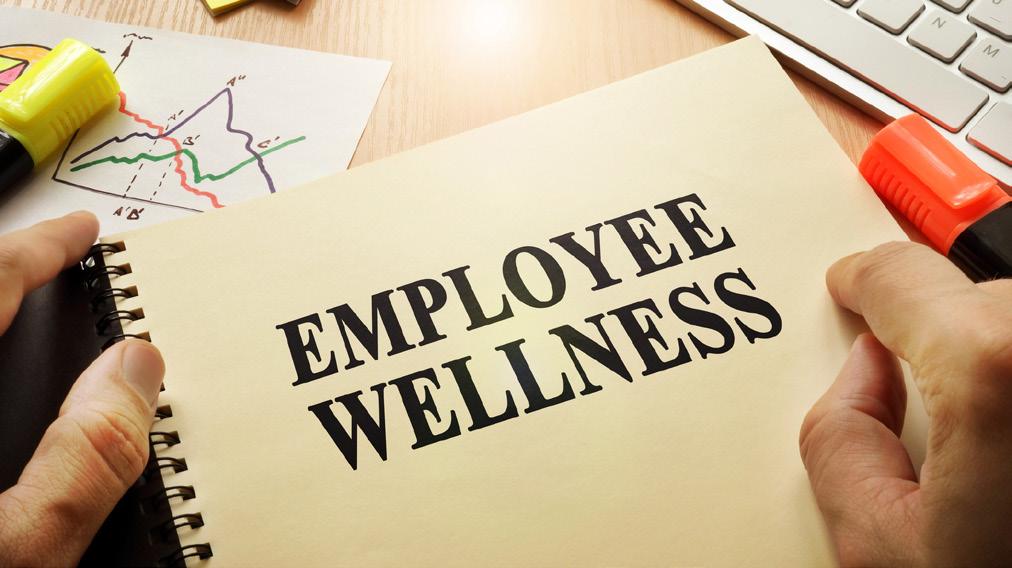
Safety technology tools, which have performed well in the
education space, are increasingly being adopted in the corporate sector because more businesses are realizing their return on investment (ROI). As you begin to tackle your company’s goals for the upcoming year, remember the vital role that employees play in achieving lofty objectives—and commit to making workplace safety a priority in 2023 for the benefit of personnel and the bottom line.
Rave Mobile Safety. Hope has amassed a 20+ year career
tech companies such as Honeywell, Compaq, Hewlett Packard, Mele Associates, VMware, Air Watch, ANM, and MCG, LLC.; having positions and consulting projects that have taken her across the globe and within the 50 states. With a proven track record in multiple domains within the tech space, Hope has relevant expertise and experience in Computer Engineering, IT Operations, Application and Platform Management, Project Management, Consulting, Sales, Sales leadership, Strategy and Business Development.

the technology
Would you like to comment?
Show that management values the importance of the HR function, and has a commitment to development and improvement of HR staff.
Ensure that each person in your HR department has a standard and consistent understanding of policies, procedures, and regulations.
Place your HR team in a certification program as a rewarding team building achievement.
Certified HR professionals help companies avoid risk by understanding compliance, laws, and regulations to properly manage your workforce.
HR Professionals lead employee engagement and development programs saving the company money through lower turnover and greater productivity and engagement.
A skilled HR professional can track important KPIs for the organization to make a major impact on strategic decisions and objectives, including: succession planning, staffing, and forecasting.
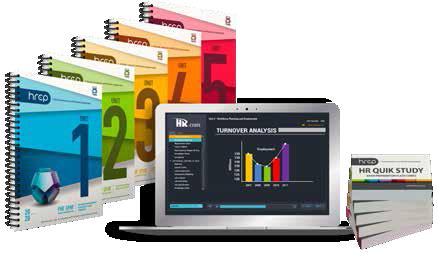
In 2023, the HR industry will be laser-focused on new and better technologies and even more focused on employee engagement and the employee experience. At the same time, HR professionals and their IT teams

will continue to address the challenges around DEI, hiring and retention, and the ethical use of AI-hiring solutions. Here are four trends that will shape the HR industry in 2023:
Artificial intelligence and analytics have become effective tools in removing bias during the talent acquisition process. Yet “black box” algorithms have the potential to discriminate against various protected (and unprotected) classes and compromise individual privacy. As a result, states and localities are proposing bills that monitor how these algorithms should be used (i.e. New York City AEDT law). These various bills can be hard to follow, causing confusion among employers. As more federal guidance is introduced, as with the White House Blueprint for an AI Bill of Rights, we expect to see increased clarity around legislation and how it is intended to enable the harnessing of AI for the good of humanity. 2023 will bring meaningful steps forward with laws encouraging transparency, fairness, and the protection of individual privacy.
Over the last year, there has been conflicting data with some businesses reporting many openings, but difficulty filling them. Others have experienced a flood of applications. Modern hiring platforms allow talent intelligence to be deployed flexibly to support shifting employment market needs. Moving into the new year, more businesses will see the value of adopting these agile, automated intelligent hiring platforms. With pre-employment assessments and interview technologies, these platforms will help them address both candidate scarcity and abundance and be able to shift between the two quickly.
Whether you call it the Great Resignation or Quiet Quitting, worker disengagement and dissatisfaction are at an all-time high in nearly a decade, according to recent research from Gallup. To offset this, organizations can increase pay, improve employee well-being, create a compelling mission, and help workers build interpersonal relationships. On top of this, they can save millions of dollars by adopting scientifically designed selection procedures to predict long-term employee fit and retention. We expect to see a resurgence in tried-and-true methods of engagement building in 2023.
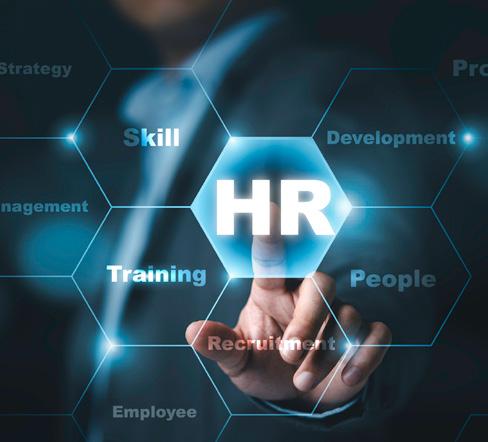
As the labor market continues to be in turmoil in the coming year, hiring teams will need to build brand-rich candidate experiences that include opportunities to demonstrate their skills through ethical, science-based job previews and/or simulation assessments and offer personalized feedback – in as close to real-time as possible – while also providing an opportunity for the candidates to experience what the job is really like. The candidate experience has never been more important, with companies competing for workers in a historically low unemployment labor environment. Organizations must work harder to build engaging and informative hiring processes and design jobs that will appeal to motivated new hires over the long term.
Eric Sydell is the EVP, Innovation at Modern Hire. Eric oversees all research and product innovation initiatives at Modern Hire, including the data science-focused Labs team. He is passionate about applying machine learning, and deep learning in particular, to candidate data to more effectively match candidates with career opportunities. Eric is highly motivated to show the power of these new AI-based technologies and guide them to ensure they benefit individuals and organizations. He writes extensively on and has spoken around the world on these topics. Eric previously served as Executive Vice President, Innovation at Shaker International, of which he was also a founder.
Would you like to comment?

An excellent opportunity for employees craving connection, productivity, and opportunity
By Shane Connell, The Connell CompanyThe Covid-19 pandemic spurred dramatic changes across industries that radically shifted how businesses operate in order to stay profitable.
As a result of mandatory quarantines, companies learned that most work, which had traditionally occurred in person, could now just as easily be accomplished remotely. As businesses continue to return to the office, many employees are resisting the traditional corporate office setting, leading many companies to experience issues related to attracting and retaining talent, as well as maintaining efficient operations.
According to a 2022 study from Deloitte, 46% of Gen Z and 45% of Millennials report feeling burnt out from the intensity
and demands created by their work environments.
Additionally, 44% of Gen Zs and 43% of Millennials stated that many people within their organizations had recently left
as a result of the high workload pressure. Employers must make a concerted effort to address these challenges, as those who don’t may see it negatively impact their bottom lines.
The traditional office environment and its respective 9-to-5 schedule is rapidly evolving. Job candidates are seeking employers that offer maximum flexibility, great benefits, and access to lifestyleenhancing amenities. There are many ways that companies can promote employee happiness and productivity without jeopardizing their balance sheets. This includes offering flexible work schedules that enable employees to work both in the office and from home. Promoting employee health and well-being has also become increasingly important, with many companies implementing new PTO and sick leave policies that are more flexible and supportive than in the past.
While most people appreciate the flexibility that hybrid work provides, some fully remote employees may experience feelings of isolation when not interacting with their teammates in person on a regular basis. In order to encourage socialization and bolster feelings of connectivity, employers should seek out co-working solutions for their remote and hybrid employees. Research shows that a dedicated off-site workspace can boost productivity levels, as it provides an alternative to working from the kitchen table that is free of noise and other distractions. Giving employees a high-performance co-working environment to do their best work will help them to feel more connected with their organization, as well as more likely to bring high energy to their work each day. Offering access to coworking spaces can also help mitigate commute times and cost of living concerns, as employees who would typically commute to
the city — or be forced to live within the city limits — can now stay closer to home and save on expenses.
The most sought-after coworking spaces will include amenities that help encourage work/life balance among employees. Amenities such as gyms, access to nutritionists, quality food and health care — including mental health resources — are critical in this regard. The benefits of promoting health and wellness in the workplace cannot be overstated.
According to the U.S. Department of Health and Human Services, nearly 60% of employees do not get adequate exercise. Higher fitness levels will ultimately lower healthcare costs and lead to a decrease in absenteeism — i.e. less sick leave used — as well as a reduction in stress levels, which can lead to better work performance. Participation in fitness activities can also help employees to get to know each other on a more personal level, creating enhanced relationships and a greater sense of community.
Additionally, coworking facilities and their respective amenities provide plentiful opportunities for networking and collaboration, as these spaces are shared by professionals across a variety of companies and industries. By spending time in a communal space, co-working members can develop relationships, as well as choose how and
when these interactions occur, which helps stave off the feelings of isolation and loneliness that remote work sometimes creates. Common areas such as cafe spaces, kitchenettes and regularly scheduled social events enable employees to network outside of their company and the boundaries of their profession. This could lead to fruitful business opportunities, helping employees to succeed professionally as well as personally.
The pandemic impacted the corporate world on many levels, which means employers who wish to stay ahead of the curve must factor in the increasing number of remote and hybrid employees who make up a rapidly growing segment of today’s workforce. Companies that invest in their employees’ well-being through access to inviting work environments that offer amenities and resources will be the most successful when it comes to attracting and retaining their industry’s best talent.
Shane Connell is the Executive Vice President of The Connell Company, one of the largest diversified, privately-held companies in the United States. He is currently leading the $400-million transformation of The Park at Berkeley Heights, a collegiate-inspired, mixed-use campus.
Would you like to comment?

HR.com prepares HR leaders to be strategic business leaders by curating and delivering best-in-class products and services so you don’t have to waste time seeking out content on your own. We leverage technology and experience to provide you with customized solutions to best meet your professional development needs at every stage of your career.
From on-demand to cohort-based offerings, below is a listing of virtual courses that will challenge and empower you by giving you the tools to drive innovation and success in your organization.
Learn practical coaching skills and tools you can put to work in your organization right away with the first part of the Shift Corporate Coach Program™ on HR.com! This 2-part program provides business leaders with the right coaching toolset for ultimate coaching success through an independent online learning program and live virtual coaching clinics and circles.
A new virtual course to help your managers maximize their potential! Inspired by HR.com’s educational book, HR Fundamentals for Non HR Managers, this virtual course will equip managers and supervisors with strategies, knowledge, how-to’s, and hands on exercises to effectively lead people with an HR lens.
Introduction to Human Experience Management (HXM). This virtual course will give you an introduction to HXM through an interactive learning experience. Learn about HXM, its components, and how to apply it to optimize the employee journey, and to create inspired more fulfilling work environments and interactions with all stakeholders that lead to better business results.
Become a more data driven HR Professional. This course will arm you with the skills to create data-driven interventions that solve real problems and provide you with the skills you need to present your findings back to the business and make a convincing case.
This course provides a firm foundation for anyone looking to understand quality management practices and techniques.
When using data analysis to improve organizational performance, it’s vital to employ the tools that bring the data to life and keep people engaged in the process. Organizations in both the public and private sectors often use tools and frameworks to deliver the data, and the information the data might suggest, to its staff. This intermediate-level course will explain some of these measures and tools, describe some specific measurements, and explain the relationship between assessment and strategy.
Gain access to more expert-led courses.
At HR.com, we are committed to educating and inspiring HR professionals and helping them build meaningful and impactful careers. With products and resources rooted in education, research, and leveraging cutting-edge technology, we help at every career stage - and over 1.92 million HR pros agree! (How could that many people be wrong?) By delivering best-in-class learning products, 250+ annual webcasts and 30+ world-class events, and innovative and thought-provoking research through the HR Research Institute, HR.com strives to inspire and strengthen workforces to change the world. HR.com also offers the most comprehensive HR certification exam preparation and guarantees a passing score on all SHRM and HRCI certification exams. Technology and experience drive our customized solutions that will help you become the best and most successful version of yourself.

In a thriving corporate landscape given to evolution with new industries constantly developing and gaining legitimacy, it’s not unusual to overlook the steps required to earn the regard of established industries.
Mainstream businesses already dominate the playing field which global commerce is built upon, but they didn’t get there by cutting corners and slashing best practices. They developed them.
We’ve just witnessed the collapse and dissolution of several companies as FTX filed for bankruptcy. Others in the crypto exchange industry like BlockFI, Celsius, and Genesis, have suspended account withdrawals in the avalanche currently reshaping the face of cryptocurrency.
One lesson writ loudly on the growing pile of ashes is that a lack of internal checks and balances—e.g. no HR
department amongst many others—played heavily into FTX’s cataclysmic demise.
The error we see most often at the granular level of any business structure is how new and emerging markets like cryptocurrency fail to treat their business with the respect and diligence seen in established industries.
The temptation is to cut corners. It always is. When we apply our analysis to what happened with FTX and the other dominoes that continue to fall as the issue spreads through the crypto exchange market, a pattern of neglect surfaces.
We see it in other markets that are still new such as the cannabis market. The refrain might sound like this, “We’re new. We’re young. We’re slick. We don’t want to run like a standard old school corporation.”
When an industry fails to police itself by applying long-standing models and reliable structures, e.g. self-governance, the question we bring to the table is— does this industry deserve to be regarded as legitimate?
We know from decades of applied psychology that taking oneself seriously is the quickest route to earning the respect of one’s peers. But what does that look like, on a corporate level?
Put simply, the application of long-standing models and corporate structures build credibility. Setting up internal audit systems, an HR department, and quality control measures speaks to the expectations a company has for itself.

It’s in the best interest of any new industry hoping to see exponential and healthy growth to adhere to specific models with a healthy dose of internal regulation that tells the rest of the world that you mean business.
Pun intended.
As we preach self-awareness here to upstarts like the cryptocurrency and cannabis markets, we’d be remiss to not acknowledge the moth-ball taste in the mouth that “HR department” inspires.
Yes, it’s not tasty. Yes, it makes us all think of a lonely water-cooler, bad coffee, and binders with guidance on how to run things at a company-wide level. What a drag.
Let’s be real—HR is more than just binders and processes and procedures and drug and harassment training. It’s awareness at a people-level of what’s happening at a corporate level and how that trickles down to the employee level.
HR isn’t the only department that we believe could have benefited FTX, although the purported lack of one may have directly contributed to the mass failure to control what was happening within the company.
“Those failures apparently included lax HR practices for a company as complicated as FTX. According to Ray’s filing, ‘FTX Group’s approach to human resources combined employees of various entities and outside contractors, with unclear records and lines of responsibility,’”
Quartz reported on November 17th (the article begins with the very cutting opening line of, “No one is sure who works at FTX.”).
Outside watchdogs should not be the parties responsible for policing a corporation. Legitimacy for an industry that wants a place at the table with the big dogs must take matters into its own hands. That begins with self-governance.
As fledgling companies grow into large corporations, the application of long established structures that include internal watchdogs, audit departments, and yes, people departments (HR), are necessary to survive and thrive in the complex world of business.


While it may be easy to dismiss the implosion of these multiple businesses in a new market space as growing pains (they are), they don’t have to be quite so devastating. It’s our estimation that they wouldn’t be if executives at the forefront took their role seriously enough to organize their businesses.

That may mean seeking outside consultations and expert guidance to understand just how to do that, depending on a business’s size and what its long term goals are.
Within the destructive fires of a catastrophe like what we’ve seen at FTX and inside the cryptocurrency exchange space, we see a beautiful lesson— growth doesn’t have to mean the sacrifice of self-governance
and security. Market disruptors, emerging industries, and being on the leading edge of progressive thought doesn’t necessarily imply danger and risk.
It can signify progress without the sacrifice of certainty.
Jason Walker and Rey Ramirez are Co-founders at Thrive HR Consulting, a minority-owned HR advisory that provides value-based HR support for mergers and acquisitions, C-Suite executive coaching, employee relations, DEI and belonging, performance management, employee engagement, and talent acquisition.

Last year, tens of millions of people in developed economies left their jobs throughout a post-pandemic driven phenomenon that has earned itself the tag: the Great Resignation. Over time, it became apparent that people were not just leaving jobs or work altogether, but are also using the temporary safety net of pandemic-led stimulus to find better ways of earning a living.
So the Great Resignation gave way to the Great Renegotiation. Higher pay, stable hours, and flexibility ranked highly for these movers and shakers. People took advantage of this unique moment in economic and social history to recalibrate what they wanted from life and expected from employers.
The upshot has been that workforces in mature economies are no longer willing to tolerate substandard employee experiences. Meanwhile, businesses quickly understood that the balance of power had shifted forever—in favor of job candidates— and that the new killer benefit any business can offer recruits is a positive company culture. We can expect greater flexibility, communication, and feedback as major themes in employee management over the coming 12 months.
The task of activating, executing, and managing the components that underpin business continuity has fallen squarely on the shoulders of the HR function. These are clear when you look at the data from a recent joint HR Benchmark study that our insights team at HiBob commissioned with US HR consultancy firm, Workology.
The research shows that HR professionals are increasingly becoming accountable for, on average, 11 areas of responsibility, including culture and engagement, DE&I, onboarding, and employer branding.

In fact, nearly two-thirds (63 percent) of respondents said they now oversaw this last directive. In a sense, HR has become somewhat of a planning committee—creating team outings and events that allow employees to feel a sense of belonging and connection to the company and their coworkers.
Interestingly, the research also shows a staggering 70 percent of top HR leaders are now reporting to the CEO, indicating the function has moved up the ranks of the pecking order to become an essential contributor in high-level company business decisions.
All of these areas intersect with and influence the employee experience. In this sense, HR must find ways to create a positive and supportive culture for teams to ensure employees not only feel welcomed but stay at the company for the long haul. With 52 percent of those polled stating retention and turnover were their top business imperatives this year, it is no surprise that finding, attracting, and keeping highperforming employees has become a priority for HR professionals. HR teams will continue to acknowledge that a better employee experience means a better bottom line.
If they get this wrong, HR teams risk company losses associated with the time it takes to fill vacant positions—an average of 5.4 months, according to another study we did at HiBob with job listing marketplace provider, Fiverr.
This all sounds difficult and complex because it is difficult and complex. In fact, for modern, mid-sized, and flexible businesses, HR is not only increasingly reliant on progressive HR tech, but it is also demonstrating a real appetite to adapt and use even more advanced tech stacks to fulfill these tall orders.
However, great tools must lend themselves to a great experience because, in today’s labor market, it is not enough for any leader to provide what is good; they have to provide tech that is right.
HR professionals understand that managing incoming and outgoing talent is not just a question of
a welcome lunch or exit interview and leaving card. Instead, they need analytics capabilities to mine data for use in hiring, developing, and retaining the best employees. In this way, they should consider themselves internal service providers that ensure high returns on people investments.
Our survey with Workology points to the fact that HR now maintains robust tech modules set up to churn out metrics and data, the analysis of which helps them attain company KPIs. For HR, these will now go far beyond basic core HR functions and more toward driving elements, such as engagement, performance, and values. In this way, HR can create and implement intentional cultures directly responsible for accelerating performance.
Rises in HR budgets are also validating the growing importance of HR roles. The HiBob-Workology survey notes that around half (45 percent) of HR professionals said their HR budgets will increase by up to 20 percent over the next year, and an additional 6 percent said it would increase by 30 percent or more.
This benchmark goes a long way toward revealing just how crucial a part HR now plays in high-level business planning at modern organizations. Another clear indicator is seeing how often HR is now led by or reports directly to a C-level executive (70 percent report to the CEO and an additional 3 percent to the board). It shows that chief human resource officers (CHROs) and other HR leaders are progressively being held responsible for, and indeed being entrusted with, the overall success of a business. The profile of human resources leaders is rising—along with ambition levels.
While it all started with HR playing a leading role in helping companies adjust to the pandemic’s impact on the workplace—namely figuring out how to build and maintain great remote and hybrid work practices—the charge is now, and will continue to be extended towards creating cultures and overseeing the end-to-end employee experience.
Not even the anticipated challenges around a possible economic downturn in the second half of 2022 will likely derail HR’s holy trinity of engagement, culture, and retention. These anchors will become even more important to provide a level of “uncertainty management.” This being the case, a system based on old rules—a hierarchy that solves for uniformity, bureaucracy, and control—will no longer be effective.
Taking its place should be a model that is more flexible and responsive to the ebbs and flows of market dynamics, and the HR function will be central in helping activate the right levers.
To shepherd the organization of the future, regardless of the anticipated slower growth economy, CHROs and other leaders should do nothing less than reimagine the basic components of what makes a business successful. Prioritizing initiatives that strengthen their organization’s ability to drive change in leadership, culture, and employee experience, and then mapping that back to its greatest assets— humans will be key. When companies become more human, they are by default more inspiring, collaborative, and set up to create an employee experience that is meaningful and enjoyable.
While employee retention will continue to challenge businesses in the coming year, so will ensuring the right people are retained at a time when financial management may also need to become a consideration, and it will entail leading in new ways valued by your top performers.
McKinsey recently conducted research on how businesses can best organize for the future. Early findings suggest that future-ready companies share three characteristics: they know what they are and what they stand for, they operate with a fixation on speed and simplicity, and they grow by scaling up their ability to learn and innovate.
According to Fortune Business Insights, the HR technology market will be worth 35.68 billion dollars by 2028, with a 5.8 percent CAGR. This will be driven by rising demand for predictive and workforce analytics-enabled tools for growth. Successful organizations will work together with their people to create personalized, authentic, and motivating experiences that tap into purpose. This, in turn, will strengthen individual, team, and company performance. And, you guessed it—the HR team is central in shaping this whole business module.

Going forward, we may see more automation of certain tasks, particularly as it relates to the employee experience—things like making onboarding smoother and more customized so that new people feel individually welcomed and can quickly bond with your company culture, values, and colleagues. Removing the need for HR to deliver these workflows manually will mean they can focus more on the people themselves. In this sense, the heart of HR will continue to be human at its core
HR will be centered more on understanding and empathizing with the candidate’s and/or hire’s different needs as these directly affect motivation for individuals. From reskilling people to perform in the new digitized workforce to being cognizant of other drivers, such as work-life balance, career opportunities, training and development, DE&I initiatives, flexibility, or simply providing a climate where work feels meaningful will likely dominate the HR agenda.
With the right tools, HR is perfectly positioned to ensure the employee experience continues to be positive. Similarly, while HR’s roles continue to
expand, companies are taking note and making sure that they support their HR teams. Modern HR will, it appears, firmly take a seat at the core of organizations’ key decision-making processes going forward, ensuring companies place the focus on today’s workforce expectations.
In short, creating a highly engaged workforce and a thriving workplace continues to be a major focus for all HR managers. And the reason is simple—every business needs what employee engagement creates: happier and more productive employees.
 Zehavi is the CEO and Founder of HiBob
Zehavi is the CEO and Founder of HiBob
Would you like to comment?

The State of Human Experience in the Workplace
January 31, 2023 REGISTER
February 15-16, 2023 REGISTER
February 22, 2023 REGISTER
January 24, 2023
11:00 AM - 12:00 PM ET
January 25, 2023
06:30 AM - 07:15 AM ET REGISTER
January 31, 2023
February 9, 2023
12:00 PM - 12:30 PM ET REGISTER
Art of Mentoring combines evidence-based mentoring expertise with the latest technological innovations to enable organisations to develop impactful, costeffective mentoring programs.

Sterling, a leading provider of background and identity services, helps 47k+ global clients create people-first cultures and hire with confidence.
At Jobvite, our mission is to empower organizations to hire and retain the talent they need to succeed. Our goal is to deliver the world’s most innovative and essential talent acquisition solutions.

Providing best-in-class consulting, rigorous analytics, and datadriven insights that help organizations make factbased decisions.
SkillSurvey’s talent intelligence platform provides actionable insights and optimizes talent decisions with feedback across the entire employee lifecycle.
 LEARN MORE
LEARN MORE
LEARN MORE
LEARN MORE
LEARN MORE
LEARN MORE
LEARN MORE
LEARN MORE
LEARN MORE
LEARN MORE
Harrison Assessments uses predictive analytics to help organizations hire, develop, lead and engage talent.

TRACOM is the leader in Social Intelligence training. We offer SOCIAL STYLE, Resilience, EQ and Agility assessments and training programs.
EVERFI’s workplace training offerings empower employees to transform their organizations' workplace cultures with impactful, change-driven courses that go beyond compliance.
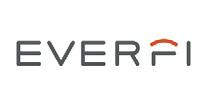

Paychex, Inc. (Nasdaq: PAYX) is a leading provider of integrated human capital management software solutions for human resources, payroll, benefits, and insurance services.

